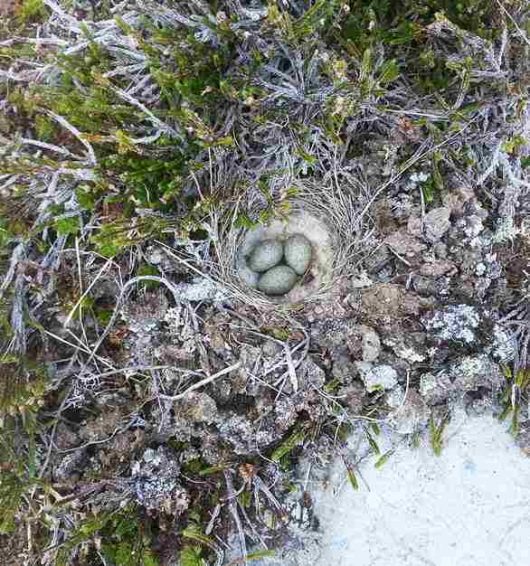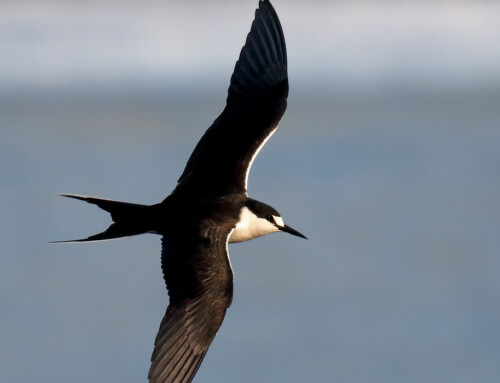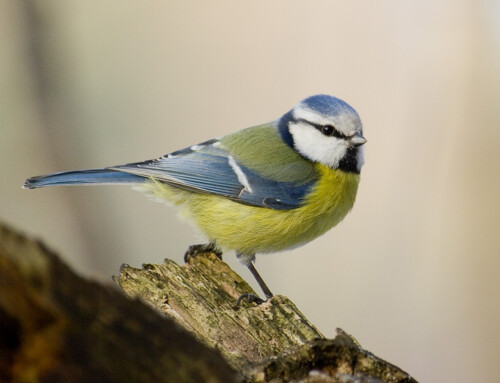How nesting behaviour may buffer alpine songbirds against weather variability
LINKED PAPER
Substrate and structure of ground nests have fitness consequences for an alpine songbird. de Zwaan, D.R. & Martin, K. 2018. IBIS. DOI: 10.1111/ibi.12582 VIEW
For a high elevation, alpine population of the small-bodied, ground-nesting Horned Lark, Eremophila alpestris, environmental conditions during the breeding season can be harsh and unpredictable. The reality of the environmental variability to which these larks must contend can be difficult to visualize until one experiences it first-hand. This reality became crystal clear at 06:00 hrs on May 30th 2015, approximately 1800 m above sea level near Smithers, British Columbia, and about a month in to the first season of a project addressing life-history variation within a population of Horned Larks. Approximately 60% of the snow in the alpine had already melted by this time and breeding was in full swing, with 25 breeding pairs already incubating. However, the previous 12 hrs had brought a cold storm that dumped several centimetres of fresh snow, resetting the alpine back to a state of winter overnight. We expected to find most, if not all, of the nests abandoned. Rather, the first nest we checked that day was found completely dry and intact with 3 warm eggs and snow cover right up to the edge of the nest (Fig. 1). This was not an abnormal case. Of the 25 nests checked that day, all were active, and over an entire season which included several cold, harsh snow storms only 4 of 97 nests were abandoned.

For birds, the theoretical challenges of breeding at high elevation are well established. Individuals must contend with freezing temperatures, extensive snow cover, short breeding seasons, frequent storm events, and high winds (Martin et al. 2017; Fig. 2). Predation risk may also be more pronounced, particularly early in the season when snow cover is still quite extensive and limited bare patches available for nesting are easily identified by predators (Fig. 3). On first glance, the odds seem stacked against songbirds inhabiting the alpine. We were interested in how birds have adapted their life-history to reproduce successfully in a stochastic, uncertain environment. Theory suggests that for variable environments, expressing flexible behavioural traits should be advantageous, particularly if these traits carry fitness consequences (Piersma and Drent 2003). Finding all nests intact following the storm, we also became interested in whether lark females, beyond simply adjusting incubation behaviour, could be flexible in their nest placement and structural choices to modify the nest microclimate in response to the external climate.


Detailed descriptions of nests, and particularly studies on the functions of nest characteristics, are limited to a small proportion of the world’s bird species; yet, there is evidence of birds altering nest characteristics in response to the environment. For example, insulative nest lining can improve heat retention and the amount of lining use has been correlated to ambient temperatures for species like the Blue tit (Cyanistes caeruleus; Mainwaring and Hartley 2008). At our field site, we had a fantastic opportunity to address nest characteristic patterns for the Horned Lark, an open-cup, ground-nesting species, whose nests are highly exposed to the environment. Due to the variability and unpredictability of high elevation environments, we expected this population to demonstrate more pronounced flexibility in nesting behaviour than more commonly studied populations of cavity nesting species in comparatively stable, low elevation habitats of temperate Europe and North America. In fact, larks at our site demonstrate naturally high variation in several nest characteristics such as substrate (heather, grass, bare-ground), nest lining (Willow seed-down, feathers, grass), and ‘decorative’ nest structures of stones and dirt clumps varying in mass from 5.3–186.6 g (Fig. 4). One of our driving questions was whether this variation in nest characteristics stems from differences between nest builders or highlights flexible behavioural responses to changing environmental conditions.

In 2015 and 2016 we collected nest placement and structure data for 199 nests which we then correlated with ambient and nest microclimate temperatures. We also addressed how choices of certain nest characteristics may influence reproductive success. Surprisingly, even as an obligate ground-nesting species with seemingly limited options for nest placement, Horned Larks demonstrated a strong relationship between nest substrate use and the external environment. We identified a potential trade-off between microclimate and predation risk pressures since nests in heather substrate had the coldest microclimates and the lowest hatching success, but also the greatest nest survival rates (lowest risk of predation). Additionally, the use of Willow seed-down lining declined over the season with rising ambient temperatures and was associated with larger, heavier nestlings, while larger decorative structures were linked to warmer nest microclimates. Most interestingly, females (the sole nest builders in this system) demonstrated extremely high flexibility in nest characteristics, such that the vast majority of observed variation was explained by individual female choices across nesting attempts rather than differences among females.
Beyond the inevitability of rising average temperatures, variability in temperature and storm events are also expected to increase with climate change. Highly flexible nesting behaviour suggests that alpine populations of songbirds may be more capable of adjusting to some of the expected changes in climate. We suspect a thermal function for some nest characteristics may be just one part of a more intricate story, especially when it comes to the use of decorative nest structures. Some nest structures recorded at this study site required up to 163 extra nest building trips and weighed 549% of the average female body mass. It would be hard to argue that this behaviour carried no energetic cost, and therefore decoration behaviour may have additional functions beyond thermoregulation such as being ‘honest signals’ of female quality.
References
Mainwaring, M.C. & Hartley, I.R. 2008. Seasonal adjustments in nest cup lining in Blue Tits Cyanistes caeruleus. Ardea 96: 278–282. VIEW
Martin, K., Wilson, S., MacDonald, E.C., Camfield, A.F., Martin, M., & Trefry, S.A. 2017. Effects of severe weather on reproduction for sympatric songbirds in an alpine environment: Interactions of climate extremes influence nesting success. The Auk 134: 696–709. VIEW
Piersma, T. & Drent, J. 2003. Phenotypic flexibility and the evolution of organismal design. TREE 18: 228–233. VIEW
Image credit
Featured image: Horned Lark (Eremophila alpestris) nestlings © D.R. de Zwaan
Blog posts express the views of the individual author(s) and not those of the BOU.
If you want to write about your research in #theBOUblog, then please see here.





